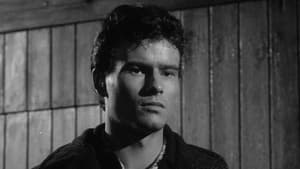Contact: [email protected]
Video Sources 0 Views

Synopsis
[ez-toc]




Introduction
In the vast expanse of cinematic history, old films stand as testaments to bygone eras, capturing moments and stories that continue to resonate with audiences across generations. Among these, “Tiger Bay” (1959) emerges as a cinematic gem that recently underwent a striking transformation through the controversial process of colorization. Directed by J. Lee Thompson, this British crime drama features a stellar cast including John Mills, Hayley Mills, Horst Buchholz, and Noël Calef. In this article, we delve into the intricate web of controversies surrounding the colorization of old movies, using “Tiger Bay Colorized 1959” as a compelling case study.
Read Media File Transfer Agreement: Terms and Conditions
Read FAQ
Preserving the Past: The Importance of Old Movies
“Tiger Bay Colorized” (1959), a British film set against the gritty backdrop of Cardiff, transports audiences to the 1950s, providing a window into a bygone era. The plot revolves around a murder investigation, intertwining crime drama with elements of suspense and a touch of film noir aesthetics. John Mills delivers a captivating performance as the police superintendent, guiding viewers through the labyrinth of intrigue that unfolds in this captivating tale.
Old movies like “Tiger Bay Colorized” hold immeasurable historical and cultural value. They serve as time capsules, preserving not only the visual aesthetics but also the societal norms, fashion, and language of the era in which they were produced. The film encapsulates the spirit of post-war Britain, offering insights into the socio-economic landscape and the emergence of the British New Wave, a cinematic movement that sought to break away from traditional storytelling conventions.
Understanding Colorization in Film Restoration
Colorization, a process aimed at adding color to black and white films, has been a topic of heated debate within the film industry. The intention behind colorizing old movies is often to breathe new life into them, making them more accessible to contemporary audiences. However, purists argue that this practice compromises the integrity of the original artistic vision and the intended aesthetics of filmmakers.
The colorization process involves digitally adding color to each frame, meticulously recreating the hues and tones that might have been present during the original filming. While some believe this enhances the viewing experience, others contend that it detracts from the unique visual storytelling that black and white cinematography offers.
The Debate Over Colorizing Classic Films
The controversy surrounding the colorization of classic films, including “Tiger Bay Colorized,” is a nuanced discussion that encompasses both pros and cons. On the positive side, colorization can make old movies more appealing to modern audiences who may find black and white visuals less engaging. It also provides an opportunity for a new generation to discover and appreciate cinematic classics.
However, detractors argue that colorization can alter the mood and atmosphere of a film, potentially diluting the intended impact of scenes. Moreover, it raises questions about preserving the authenticity of historical artifacts and the legacy of filmmakers. Does adding color enhance the viewing experience, or does it erode the essence of the original work?
The Artistry of “Tiger Bay Colorized” in Its Original Black and White Form
Before delving into the colorization debate, it’s crucial to acknowledge the visual storytelling prowess of “Tiger Bay Colorized” in its original black and white form. Cinematographer Eric Cross masterfully captures the film’s mood through stark contrasts and shadows, contributing to its film noir aesthetics. The decision to film in black and white was a deliberate artistic choice, emphasizing the grittiness and tension inherent in the crime drama narrative.
1. The Significance of Setting: Exploring Cardiff in the 1950s
The setting of “Tiger Bay Colorized” plays a pivotal role in shaping the film’s narrative. Cardiff in the 1950s serves as more than just a backdrop; it becomes a character in itself. The Newport Transporter Bridge and Avonmouth Docks, iconic locations in the film, add a layer of authenticity to the storytelling, immersing viewers in a world where every alleyway holds secrets and every dockside scene is laden with suspense.
This emphasis on setting aligns with the film noir tradition, where locations become integral to the narrative, influencing the characters and the unfolding drama. The decision to colorize such a meticulously crafted black and white setting raises intriguing questions about the impact on the overall atmosphere and the intended mood.
The British New Wave: A Cinematic Movement
“Tiger Bay Colorized” (1959) emerges as a significant contributor to the black British New Wave, a cinematic movement that sought to portray authentic stories about working-class life in post-war Britain. This movement aimed to break away from the polished narratives of the British film industry, embracing a raw and unfiltered approach to storytelling.
In the context of the black British New Wave, “Tiger Bay Colorized” stands as a testament to the evolving landscape of British cinema during the 1950s and 1960s. Its influence within this movement adds an extra layer of importance to the discussions surrounding the colorization of this classic film.
Revitalizing a Classic: The Decision to Colorize “Tiger Bay Colorized”
The decision to colorize “Tiger Bay Colorized” (1959) was not without its challenges and controversies. Film restoration experts and enthusiasts debated the merits and drawbacks of altering the visual palette of a film that had already carved its place in cinematic history. The process of colorization involved meticulous research to recreate accurate color schemes, ensuring that the essence of the original work was not lost in translation.
This revitalization effort aimed to bridge the gap between old and new audiences, offering a fresh perspective on a classic while acknowledging the nostalgia associated with the black and white version. The decision to colorize “Tiger Bay Colorized” became a litmus test for the industry’s approach to balancing preservation with adaptation.
Analyzing the Crime Drama Elements in Both Versions
The crime drama elements in “Tiger Bay Colorized” are integral to its narrative, and the comparison between the original black and white version and the colorized iteration provides insights into the impact of colorization on genre interpretation. The police superintendent’s character, portrayed with nuanced depth by John Mills, takes on new dimensions when viewed in color.
The dockside scenes, originally characterized by shadows and contrasts, undergo a transformative shift in the colorized version. The question arises: does the addition of color enhance the tension and drama of crime investigation scenes, or does it alter the intended mood of the film? Exploring these nuances is essential in evaluating the success of colorization in capturing the essence of the original work.
2. The Cinematic Evolution: From Black and White to Color
The evolution from black and white to color is not merely a technical transition; it represents a shift in narrative interpretation. Color symbolism, a powerful tool in filmmaking, takes center stage in the colorized version of “Tiger Bay Colorized.” The hues chosen for specific scenes can evoke emotions, guide audience perception, and even alter the trajectory of the narrative.
This transition prompts viewers to reassess their understanding of characters, locations, and themes within the film. Does the colorization align with the original directorial vision, or does it introduce an unintended layer of meaning? The answers lie in the delicate balance between preserving the intended aesthetics and adapting to modern expectations.
Preserving Intended Aesthetics: Restoring “Tiger Bay Colorized” Through Modern Techniques
Film preservation is a delicate dance between honoring the original artistic vision and meeting the expectations of contemporary audiences. Modern techniques, including colorization, present a double-edged sword in this endeavor. While they can breathe new life into old movies, they also risk compromising the integrity of the filmmaker’s initial vision.
In the case of “Tiger Bay Colorized,” the restoration aimed not only to preserve the film’s intended aesthetics but also to enhance its accessibility for a broader audience. The use of modern technology allowed for a meticulous recreation of colors, ensuring that the visual language of the film remained true to its roots.
The Verdict: Does Colorization Enhance or Dilute the Viewing Experience?
The ultimate verdict on colorization hinges on the viewer’s perception and appreciation of old movies. Some argue that colorization adds vibrancy and vitality, making classic films more engaging for contemporary audiences. Others believe it dilutes the unique charm of black and white cinematography, robbing films of their nostalgic and historical appeal.
The integrity of the original vision is a critical consideration. Does colorization honor the director’s intent, or does it become an intrusive reinterpretation? “Tiger Bay Colorized 1959” serves as a microcosm of this debate, inviting audiences to contemplate the impact of colorization on their personal connection to cinematic classics.
3. The Ethics of Altering Film Legacies
Ethics play a central role in the discussions surrounding the colorization of old films. While technological advancements offer opportunities for restoration, the question of whether we have the right to alter the artistic legacies of filmmakers remains paramount. Film integrity encompasses not only visual aesthetics but also the director’s intended emotional impact and thematic resonance.
Colorization, as a form of alteration, raises ethical considerations regarding the preservation of cinematic history. It prompts us to question whether the quest for modernization should come at the expense of tampering with the original vision. As custodians of cultural artifacts, the film industry must navigate this ethical dilemma with caution.
Conclusion
In conclusion, “Tiger Bay Colorized 1959” encapsulates the complex interplay between tradition and modernization in the realm of film restoration. While colorization can offer a fresh perspective on old movies, it is crucial to recognize and preserve their original black and white form as an integral part of cinematic history. John Mills, in his role as the police superintendent, guides us not only through the twists and turns of a murder investigation but also through the evolving landscape of film preservation.
As we encourage readers to experience both the original black and white version and the colorized iteration of “Tiger Bay,” we invite them to appreciate the diverse artistic choices and interpretations that each version presents. The debate over colorization persists, urging us to reflect on the delicate balance between revitalizing classics for contemporary audiences and safeguarding the authenticity of the cinematic treasures that define our cultural heritage.















